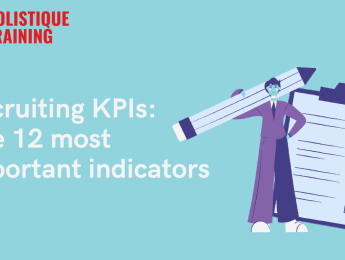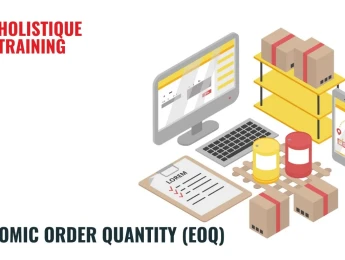- Table of Contents
- Introduction
- What Is a Business Case?
- Why Is Writing a Business Case Important?
- Clarity and Focus
- Informed Decision-Making
- Resource Allocation
- Risk Management
- Accountability
- Tips for Crafting a Compelling Business Case
- 1- Start with a Clear Problem Statement
- 2- Use Data and Evidence
- 3- Consider Stakeholder Needs
- 4- Highlight Strategic Alignment
- 5- Be Realistic with Benefits
- 6- Comprehensively Address Risks
- 7- Engage Cross-Functional Teams
- 8- Simplify Complex Information
- 9- Keep the Executive Summary Powerful
- 10- Review and Revise
- 11- Seek Feedback
- 12- Practise Your Presentation
- How to Present a Business Case
- Know Your Audience
- Tell a Story
- Visual Aids
- Be Succinct
- Address Questions and Concerns
- Business Case Template
- Business Case Example
- Beneficial Resources to Use
- Business Case Guides
- Business Case Software
- Consultation
- Online Courses
- Templates and Examples
- Industry Reports and Benchmarks
- Financial Modelling Tools
- Legal and Regulatory Resources
- Project Management Methodologies
- Market Research and Survey Tools
- Industry Associations and Networking
- Government and Economic Reports
- Customer Testimonials and Success Stories
- Risk Management Frameworks
- In-House Expertise
- Conclusion
Introduction
Crafting a compelling and comprehensive business case is essential for any professional seeking to initiate a project, secure funding, or drive strategic decisions within an organisation. Whether you're a seasoned manager or a budding entrepreneur, understanding the intricacies of writing a business case is a valuable asset. In this comprehensive guide, we will delve into the world of business cases, exploring what they are, why they matter, the steps to create one, effective presentation techniques, and even provide you with a template and a real-life business case example. Let's embark on this journey towards mastering the art of business case development.
What Is a Business Case?
Before we dive into the how-to aspect, it's crucial to grasp the fundamental concept of a business case. A business case is a well-structured document that outlines the justification for initiating a project, investment, or strategic initiative. It is a powerful tool for decision-makers by providing them with a detailed analysis of the potential benefits, costs, risks, and alternatives associated with a proposed course of action.
A robust business case should answer critical questions such as:
- What problem or opportunity does the project address?
- What are the expected benefits and returns on investment?
- What are the associated costs and resource requirements?
- What are the risks involved, and how can they be mitigated?
- Are there viable alternatives to the proposed action?
Why Is Writing a Business Case Important?
Writing a business case isn't just another corporate formality; it's a strategic necessity. Here's why:
Clarity and Focus
A well-constructed business case helps stakeholders clearly understand the proposed initiative's objectives, expected outcomes, and strategic alignment. It ensures everyone is on the same page.
Informed Decision-Making
Business cases provide decision-makers with the necessary information to make informed choices. Without this, decisions may be based on assumptions or incomplete information, leading to costly mistakes.
Resource Allocation
Businesses have finite resources. A business case allocates these resources judiciously by evaluating the potential return on investment and ensuring that resources are directed towards projects with the highest strategic impact.
Risk Management
Business cases identify potential risks and propose risk mitigation strategies. This proactive approach reduces the chances of unforeseen setbacks.
Accountability
When a business case is presented and approved, it creates a foundation for accountability. It defines goals, responsibilities, and metrics for success.
Tips for Crafting a Compelling Business Case
Crafting an effective business case requires attention to detail and a strategic mindset. Here are some invaluable tips to enhance your business case writing skills:
1- Start with a Clear Problem Statement
The importance of a well-defined problem statement cannot be overstated. It sets the foundation for the entire business case. Clearly articulate the problem or opportunity your project aims to address. Avoid ambiguity, and ensure that the problem statement aligns with organisational goals.
2- Use Data and Evidence
Back your claims with data and evidence. Robust data strengthens your argument, whether it's market research, financial projections, or case studies.
3- Consider Stakeholder Needs
Identify the key stakeholders and their interests. Tailor your business case to address their specific concerns and objectives.
4- Highlight Strategic Alignment
Emphasise how the proposed initiative aligns with the organisation's strategic goals and objectives. This demonstrates its importance in the bigger picture.
5- Be Realistic with Benefits
While it's tempting to showcase extravagant benefits, maintain realism. Overestimating benefits can lead to credibility issues.
6- Comprehensively Address Risks
Don't shy away from discussing risks. In fact, addressing risks and presenting mitigation strategies demonstrates your preparedness and transparency.
7- Engage Cross-Functional Teams
Involve experts from various departments when developing the business case. Their insights can refine your analysis and bolster your case.
8- Simplify Complex Information
Make the content accessible to a broad audience. Use clear language, visuals, and diagrams to explain complex concepts.
9- Keep the Executive Summary Powerful
The executive summary is often the first thing decision-makers read. Make it concise, compelling, and a standalone representation of your case.
10- Review and Revise
Before presenting your business case, review it meticulously. Eliminate jargon, check for consistency, and ensure all sections flow logically.
11- Seek Feedback
Don't hesitate to seek feedback from colleagues or mentors. Fresh perspectives can uncover blind spots and improve your business case.
12- Practise Your Presentation
If you're presenting the business case in person, practise your delivery. Rehearsing helps you convey your points confidently.
Tip | Description |
Start with a Clear Problem Statement | Define the problem or opportunity the project addresses, ensuring alignment with organisational goals. |
Use Data and Evidence | Support arguments with data such as market research, financial projections, or case studies to strengthen the business case. |
Consider Stakeholder Needs | Identify and address the specific concerns and objectives of key stakeholders. |
Highlight Strategic Alignment | Emphasise how the initiative aligns with the organisation's strategic goals, showing its importance. |
Be Realistic with Benefits | Maintain realistic benefit projections to avoid credibility issues. |
Comprehensively Address Risks | Discuss potential risks and present mitigation strategies to demonstrate preparedness and transparency. |
Engage Cross-Functional Teams | Include insights from experts across departments to refine the analysis and strengthen the business case. |
Simplify Complex Information | Use clear language and visuals to make complex concepts accessible to a broad audience. |
Keep the Executive Summary Powerful | Create a concise, compelling summary that can stand alone and provide a quick case overview. |
Review and Revise | Carefully review the document for consistency, clarity, and logical flow. |
Seek Feedback | Gather feedback from colleagues or mentors for fresh perspectives that can improve the case. |
Practise Your Presentation | Rehearse the delivery of the business case to confidently present the points and handle questions. |
Table: Key tips for crafting a compelling business case
By incorporating these tips into your business case writing process, you'll create a more persuasive document and enhance your ability to influence decisions and drive positive outcomes for your organisation.
How to Present a Business Case
Presenting your business case effectively is crucial to garnering support and approval. Here are some tips for a successful presentation:
Know Your Audience
Tailor your presentation to your audience's needs and preferences. Highlight the aspects that are most relevant to them, whether it's financial metrics, strategic alignment, or risk management.
Tell a Story
Weave a compelling narrative that takes your audience through the journey of the business case. Explain the problem, propose the solution, and showcase the benefits.
Visual Aids
Use charts, graphs, and visuals to make complex data more accessible. Visual aids can clarify your points and engage your audience.
Be Succinct
While providing comprehensive information is essential, avoid overwhelming your audience with unnecessary details. Focus on the key highlights.
Address Questions and Concerns
Be prepared to answer questions and address concerns from your audience. Anticipate potential objections and have well-reasoned responses ready.
Business Case Template
To make the process of creating a business case easier, we've prepared a template that you can use as a starting point:
[Your Company Logo]
Business Case: [Project Name]
Date: [Date]
Prepared by: [Your Name]
Table of Contents
Executive Summary
- Provide a concise overview of the entire business case.
Problem Definition
- Describe the problem or opportunity that necessitates this project.
- Provide context and background information.
Objectives and Goals
- Clearly state the project's objectives using the SMART (Specific, Measurable, Achievable, Relevant, Time-bound) criteria.
Alternatives
- Explore and document alternative approaches to solving the problem or seizing the opportunity.
- Compare the pros and cons of each alternative.
Feasibility Study
- Assess the feasibility of the project, including technical, operational, financial, and legal aspects.
- Identify potential risks and constraints.
Cost-Benefit Analysis
- Quantify the costs associated with the project, including initial investments and ongoing operational expenses.
- Estimate the potential benefits, both tangible and intangible.
Risk Assessment and Mitigation
- Identify and evaluate potential risks and uncertainties.
- Develop a comprehensive risk management plan.
Project Plan
- Outline the steps required to execute the project.
- Include timelines, resource allocation, and milestones.
Financial Projections
- Create financial projections demonstrating the project's return on investment (ROI) over a defined period.
Conclusion
- Summarise the key points of the business case and reiterate its importance.
Recommendation
- Provide a clear recommendation for or against the project.
Appendices
- Include any additional documentation, charts, graphs, or supporting data.
This template includes sections for problem definition, objectives, alternatives, cost-benefit analysis, risk assessment, and project planning. However, you can customise it to fit your specific needs.
Business Case Example
Let's take a look at a real-life business case example to illustrate these concepts in action.
[Your Company Logo]
Business Case: Expansion of E-commerce Platform
Date: September 15, 2023
Prepared by: Jane Smith, Director of Strategy
Table of Contents
Executive Summary
This business case presents the opportunity to expand our e-commerce platform to new international markets, to increase revenue and market share.
Problem Definition
Our current e-commerce platform is limited to the domestic market, limiting growth potential.
E-commerce trends indicate significant demand in international markets.
Objectives and Goals
- Objective: Expand e-commerce platform to three new international markets within the next 18 months.
- Goals: Increase revenue by 30%, capture 10% market share in each new market.
Alternatives
- Alternative 1: Maintain the status quo and focus on the domestic market.
- Alternative 2: Explore partnerships with local distributors in international markets.
- Alternative 3: Expand our e-commerce platform internationally as proposed.
Feasibility Study
- Technical: Our platform can support international expansion.
- Operational: We have the expertise to manage international logistics.
- Financial: Initial investments are estimated at $2 million.
- Legal: Legal and regulatory compliance have been reviewed.
Cost-Benefit Analysis
- Costs: $2 million initial investment, $500,000 operational expenses in the first year.
- Benefits: Projected revenue increase of $5 million in the first year.
Risk Assessment and Mitigation
- Risks: Currency exchange fluctuations, cultural differences, and regulatory changes.
- Mitigation: Hedge currency risk, conduct market research, and adapt marketing strategies.
Project Plan
- Phase 1: Market research and strategy development (3 months).
- Phase 2: Platform adaptation and localisation (6 months).
- Phase 3: Launch in new markets (9 months).
Financial Projections
ROI is projected at 150% within the first three years.
Conclusion
Expanding our e-commerce platform to international markets aligns with our strategic goals and presents a significant growth opportunity.
Recommendation
I recommend proceeding with the expansion project as outlined in this business case.
Appendices
Market research data, financial models, and regulatory compliance documentation.
Beneficial Resources to Use
As you embark on your journey to write a business case, consider utilising the following resources:
Business Case Guides
Numerous books and online guides are dedicated to the art of creating business cases. These resources offer in-depth insights into business case development principles, methodologies, and best practices. Guides often come with practical examples and templates, serving as valuable references to enhance your understanding and execution.
Business Case Software
Utilise specialised business case software to streamline the process and create professional-looking documents. Tools like Microsoft Word and Excel are commonly used for business case creation. Additionally, specialised software such as Wrike, Jira, or other project management tools can offer templates, collaboration features, and data visualisation capabilities that enhance your business case's overall quality and efficiency.
Consultation
Seeking advice and guidance from experienced colleagues or mentors who have successfully developed business cases in the past is a valuable resource. A fresh perspective can uncover blind spots, provide practical insights, and offer constructive feedback. Engaging in conversations and consultations with those with relevant experience can significantly enhance the quality of your business case.
Online Courses
Enrol in online courses and workshops that specifically teach business case development. These courses provide structured learning experiences, offering detailed guidance on each process step. They often include interactive elements, case studies, and assessments that reinforce your understanding and application of business case principles. Online courses can be particularly beneficial for those looking to deepen their skills and gain a comprehensive education on the subject.
Templates and Examples
Explore existing templates and real-life examples of successful business cases. Templates can serve as frameworks, ensuring that you cover all essential elements in a structured manner. Real-life examples offer practical insights into applying business case principles in different contexts. Analysing well-crafted examples can inspire and guide your own approach, providing a reference point for style, tone, and content.
Industry Reports and Benchmarks
Research industry reports and benchmarks related to your project. Understanding industry trends, benchmarks, and best practices can strengthen your business case's market analysis and competitive landscape sections. This external perspective adds depth to your document and demonstrates a thorough understanding of the broader business environment.
Financial Modelling Tools
Consider using financial modelling tools for the financial aspects of your business case. Tools like Microsoft Excel with built-in financial functions or specialised financial modelling software can assist in creating accurate projections, conducting cost-benefit analyses, and presenting financial data clearly and compellingly. These tools can enhance the quantitative aspects of your business case.
Legal and Regulatory Resources
Depending on the nature of your project, consult legal and regulatory resources relevant to your industry. Understanding legal and regulatory requirements is crucial for assessing potential risks and ensuring compliance. Legal expertise or resources can help you navigate complex legal considerations and strengthen the risk management section of your business case.
Project Management Methodologies
Familiarise yourself with project management methodologies such as Agile, Scrum, or PRINCE2. Integrating project management principles into your business case can enhance the feasibility and implementation sections. Demonstrating a solid grasp of project management methodologies adds a layer of credibility to your plan.
Market Research and Survey Tools
If your business case involves market research or customer feedback, leverage market research and survey tools. Platforms like SurveyMonkey, Qualtrics, or Google Forms can help collect and analyse data from potential customers or stakeholders. Incorporating data-driven insights from surveys strengthens the market analysis and provides empirical support for your proposed initiative.
Industry Associations and Networking
Engage with industry associations and networking opportunities relevant to your field. Attend conferences and webinars, or join professional forums to connect with industry experts and stay updated on the latest trends. Networking can provide valuable insights, access to industry-specific data, and potential partnerships that can enrich the content of your business case.
Government and Economic Reports
Consult government reports and economic analyses for projects with a broader economic impact. These resources can offer macroeconomic insights, regulatory context, and forecasts that contribute to the overall understanding of the external environment. Integrating data from authoritative sources enhances the credibility of your business case.
Customer Testimonials and Success Stories
If applicable, gather customer testimonials and success stories related to similar projects. Incorporating real experiences and positive outcomes from previous initiatives adds a persuasive element to your business case. It provides evidence of the potential positive impact of your proposed project on customer satisfaction and loyalty.
Risk Management Frameworks
Explore established risk management frameworks, such as ISO 31000 or COSO ERM, to enhance the risk management section of your business case. These frameworks provide structured approaches to identifying, assessing, and mitigating risks. Adhering to recognised risk management standards adds a layer of professionalism and thoroughness to your risk analysis.
In-House Expertise
Tap into your organisation's expertise. Consult with subject matter experts, financial analysts, legal advisors, and other relevant professionals who can contribute specialised knowledge to your business case. Leveraging in-house expertise ensures that your document is grounded in your organisation's specific nuances and considerations.
By strategically utilising these resources, you can create a comprehensive and well-researched business case that benefits from diverse perspectives and expertise. Each resource contributes to different facets of the business case, ensuring that it is robust, informed, and aligned with industry best practices.
Conclusion
Writing a business case is crucial for professionals and organisations aiming to make informed, strategic decisions. By following the structured steps outlined in this guide, utilising a template, and drawing inspiration from real-life examples, you can master the art of business case development. Remember that a well-crafted business case informs and persuades, making it a powerful tool in your arsenal for achieving your organisation's goals and objectives.
If you want to enhance your business case writing expertise further, check out our course, ‘Writing New Product Business Cases.’ This course offers in-depth guidance and practical insights to help you excel in creating persuasive business cases that drive success in your organisation. Don't miss the chance to take your skills to the next level – enrol today and become a business case writing expert!
























